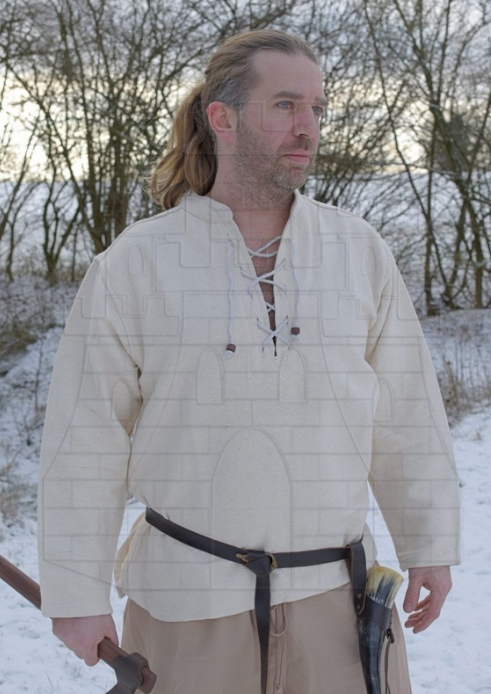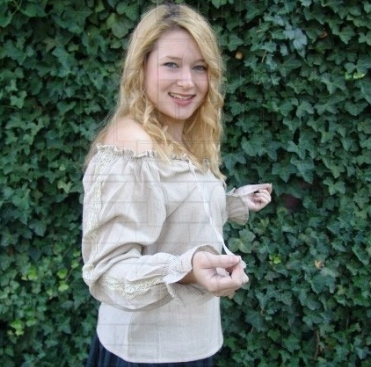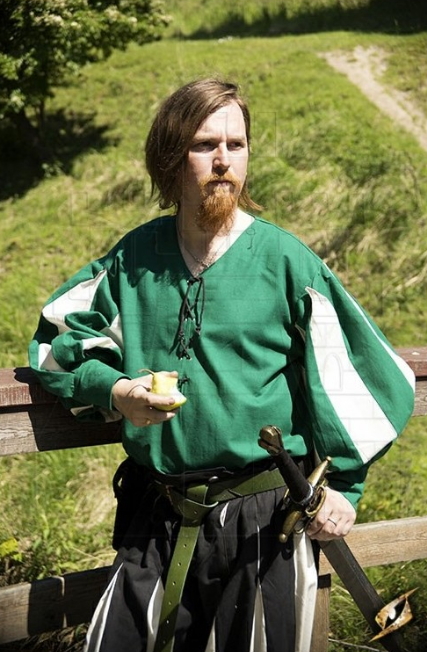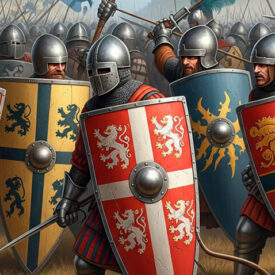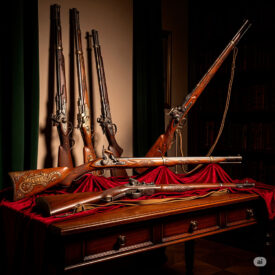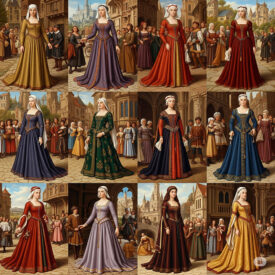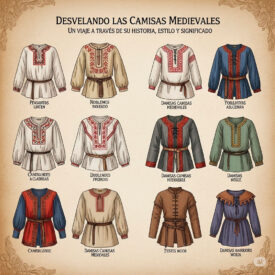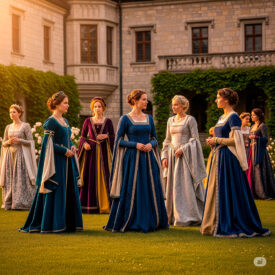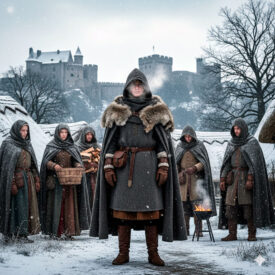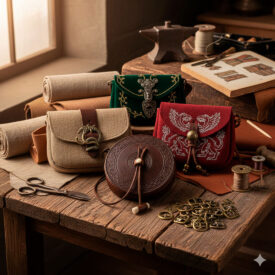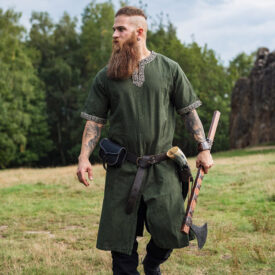Medieval shirts are much more than just a piece of clothing; they are a reflection of history, culture, and the evolution of fashion over several centuries. From their humble origins as underwear to becoming distinctive elements of outerwear, the medieval shirt has maintained a constant presence, adapting to the needs and styles of each era. In this article, we will explore in depth the fascinating journey of these garments, their features, the different types, and how to choose the perfect natural shirt for your needs.
The History of the Medieval Shirt: From Intimacy to Prominence
The shirt as we know it today has its roots in the 17th and 18th centuries. Initially, it was considered an intimate garment, a kind of underwear worn directly on the skin. Its main function was to protect the body and act as a barrier between the skin and the more elaborate outer garments, such as the coat or jacket. For this reason, the earliest shirts lacked buttons for closure, as they were not meant to be seen.
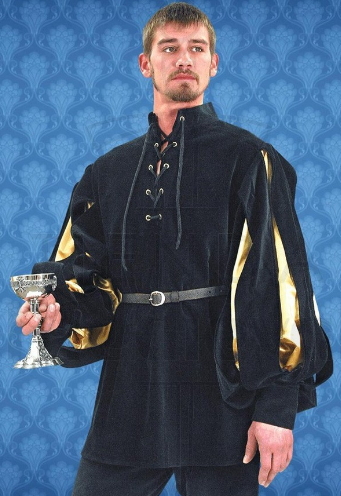
Over time, fashion underwent significant changes. Military garments, which were once long and completely covered the shirt, began to shorten, evolving into the jacket and vest we know today. As these outer layers became shorter, the shirt was progressively revealed. It was then that attention to the details and finishes of cuffs and collars became necessary, giving them their own identity and design. This change marked the beginning of the shirt as a visible garment and, therefore, its transformation into a key element of outerwear.
The Doublet: An Indispensable Companion to the Shirt
Alongside the evolution of the shirt, another fundamental garment in medieval and Renaissance attire was the doublet. The doublet was a rigid garment that covered the torso from the shoulders to the waist. It was very popular in Spain during the 15th, 16th, and 17th centuries. Like the shirt in its early days, the doublet was considered an undergarment, worn directly over the shirt. One of its distinctive features was that it was attached to the hose (tight trousers) with laces, creating a compact and structured silhouette.
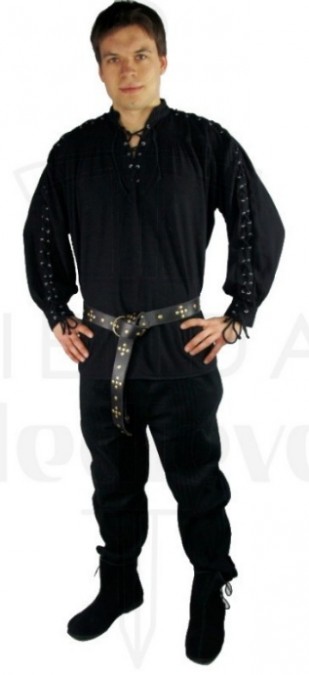
The appearance of the doublet as part of civilian dress dates back to the 14th century, but it reached its true peak in the 16th century, when its use spread from Spain throughout Europe. However, its popularity began to decline as longer tunics and French-influenced coats became more popular, marking a change in the silhouette and style of medieval clothing.
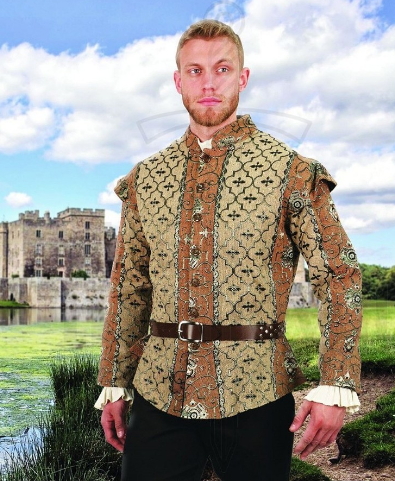
Key Features of Authentic Medieval Shirts
Medieval shirts, for both men and women, are distinguished by a series of features that reflect the textile technology and customs of the time. Most of these garments were made from natural materials such as linen, cotton, or wool, making them true natural shirts, comfortable and breathable. Simplicity in cut and functionality were paramount.
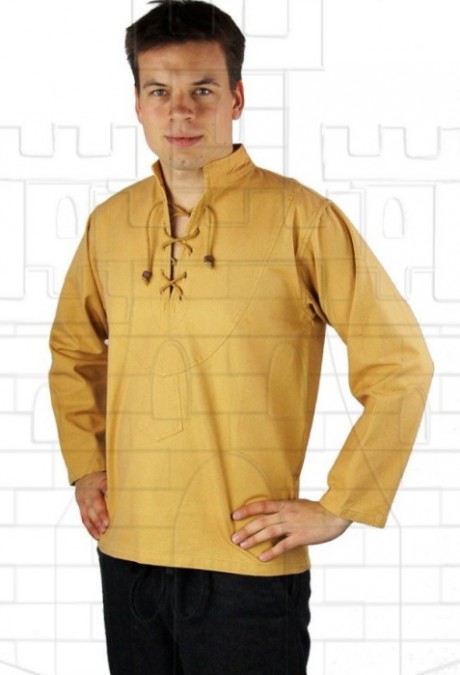
Materials and Construction
- Linen: The most common material due to its durability, breathability, and ability to absorb moisture. Linen medieval shirts were ideal for warm climates and physical work.
- Cotton: Although less common than linen in the Early Middle Ages, cotton gained popularity in later times, offering a softer texture and good insulation.
- Wool: Used mainly in colder regions or for winter garments, wool provided warmth, although it was less common for shirts worn directly on the skin.
- Loose Cuts: Medieval shirts usually had loose and roomy cuts, allowing great freedom of movement. This was essential for daily activities and manual labor.
- Simple Seams: Construction was based on simple sewing techniques, often by hand, resulting in sturdy and functional garments.
Details and Closures
A distinctive feature of many medieval shirts, both for women and men, was the use of laces to close the neck or cuffs. Buttons, as we know them, were a luxury and did not become widespread until later. Laces allowed the garment to be adjusted to the body and were practical for daily use. The medieval shirt sleeve was usually wide, often with gathered cuffs or laces to tighten them.
Types of Medieval Shirts: A Look at Diversity
The diversity of medieval clothing is reflected in the wide variety of medieval shirts that existed over the centuries. Each style and historical period had its own particularities, adapting to fashion trends and social needs. From the men’s medieval shirt to women’s blouses, the evolution is remarkable.
Men’s Medieval Shirts
Men’s medieval shirts varied in length, from those that reached the waist to longer ones that could be used as underwear or for sleeping. Collars could be round, V-shaped, or with laces. The white medieval shirt was the most common, as white was the natural color of bleached linen and symbolized cleanliness.
- Renaissance Shirt: Models such as the Renaissance Cavalier shirt, often with velvet details and ruffled collars, reflect the opulence and style of the era. These shirts were more elaborate and were often worn with doublets and coats.
- Renaissance Soldier Shirt: Functional and robust, these shirts were designed for action, with cuts that allowed movement and resistant materials.
- Mercenary Shirts (Landsknecht): A unique and striking style. The Joerg model medieval mercenary doublet, made of top-quality cotton, is a perfect example. It is believed that Landsknecht mercenaries began to cut their clothes, considering them too tight, which gave rise to a distinctive and disheveled style that became popular in the 16th century. This rebellious and practical style spread quickly.
Women’s Medieval Shirts
The women’s medieval shirt was also an essential part of daily attire. Like the men’s, they were used as underwear, often long, to better protect against the cold and to safeguard outer garments. Medieval blouses, often with ruffles or details on the cuffs and collar, were common.
Ideal Use Scenarios and Comparison
Medieval shirts are versatile and adapt to various scenarios, from historical reenactment to themed events and costumes. Choosing the right natural shirt will depend on the context and the desired level of authenticity.
Advantages and Disadvantages by Type and Material
- Linen (Advantages): Extremely breathable, durable, ideal for hot climates, softens with use, historically accurate. (Disadvantages): Wrinkles easily, can be more expensive.
- Cotton (Advantages): Soft, comfortable, easy to care for, more affordable. (Disadvantages): Less breathable than linen in very hot climates, less historically accurate for earlier periods.
- Shirts with Laces (Advantages): Customizable fit, authentic medieval design, durable. (Disadvantages): May take longer to fasten, laces can come undone.
- Wide Sleeve Shirts (Advantages): Great freedom of movement, authentic style, ventilation. (Disadvantages): May be less practical for certain activities, can get caught.
Who Is Each Medieval Shirt For?
- Beginners and Occasional Adventurers: A comfortable and easy-to-maintain cotton medieval shirt is an excellent choice. They are ideal for themed parties, medieval fairs, or simply for getting started in the world of reenactment. A basic white medieval shirt is always a good choice.
- Reenactors and Experts: For those seeking maximum authenticity, linen medieval shirts with historically accurate cuts and details such as laces are essential. The linen natural shirt is the top choice for historical reenactment events.
- Style Enthusiasts: If the goal is to incorporate a medieval touch into contemporary fashion, shirts with subtle details, such as a wide-sleeved medieval shirt or collars with laces, can make a unique style statement.
How to Choose the Perfect Medieval Shirt: Buying Recommendations
When looking for the ideal medieval shirt, it is important to consider several factors to ensure a satisfactory purchase. Whether you are looking for a men’s medieval shirt for an event or a natural shirt for everyday use, quality and design are key.
-
- Material: Always prioritize natural materials such as linen or cotton. Make sure the fabric is of good quality and breathable.
- Design Authenticity: If historical accuracy is important to you, research the styles of medieval shirts from the era you are interested in. Pay attention to cuts, collars, cuffs, and closures.
- Comfort and Fit: Although many medieval shirts were loose, make sure the size is right for you and allows you to move freely.
- Details and Finishes: The quality of the seams, laces, and any other decorative detail is an indicator of the garment’s durability.
- Versatility: Think about the different uses you will give your medieval shirt. A white medieval shirt is extremely versatile and matches almost any outfit.
We hope this guide has given you a complete overview of medieval shirts, their rich history, and their relevance in the clothing of the time. From the natural shirt to the most elaborate men’s medieval shirt, each piece tells a story. If you are looking to add these unique garments to your wardrobe, we invite you to explore the wide selection of shirts that we offer high-quality medieval shirts. In our online store, you will find a selection of medieval shirts covering various styles and eras, perfect for historical reenactments, themed events, or simply for those who appreciate the beauty and authenticity of medieval clothing. Our shirt collection is carefully curated to offer you the best in design and comfort. Discover the perfect medieval shirt for you and immerse yourself in the charm of history!
